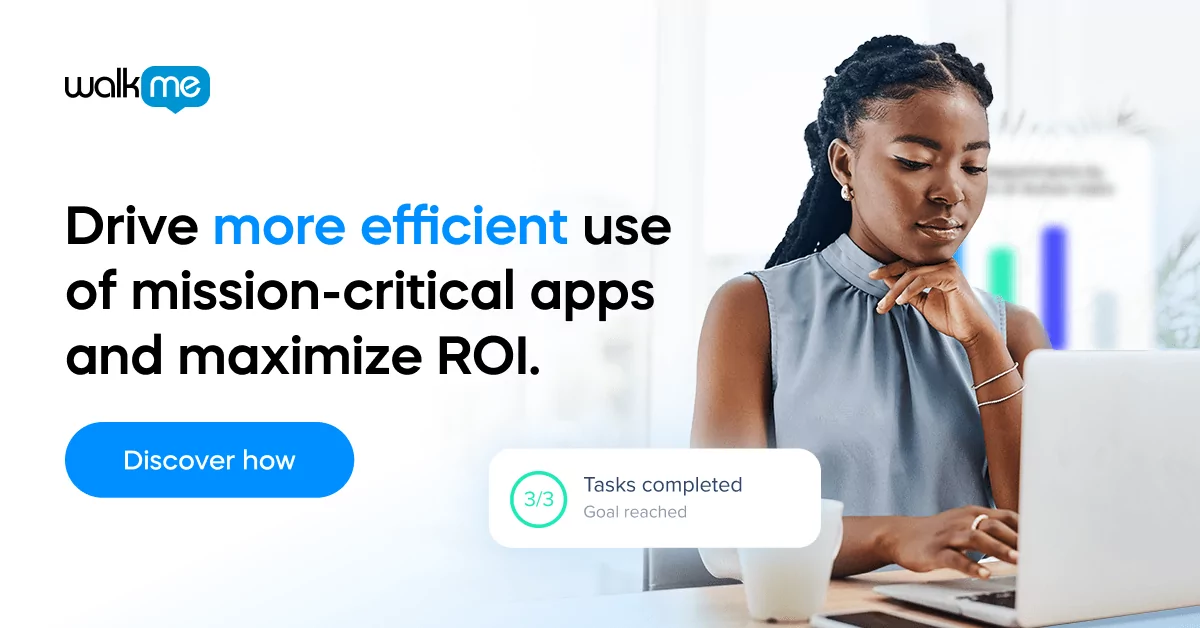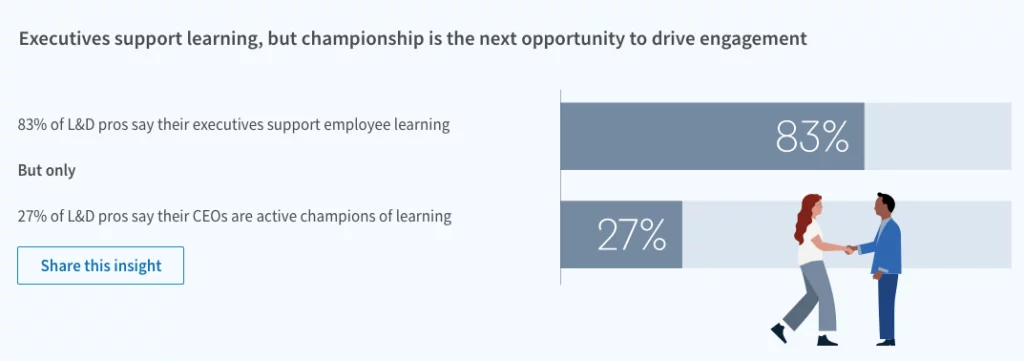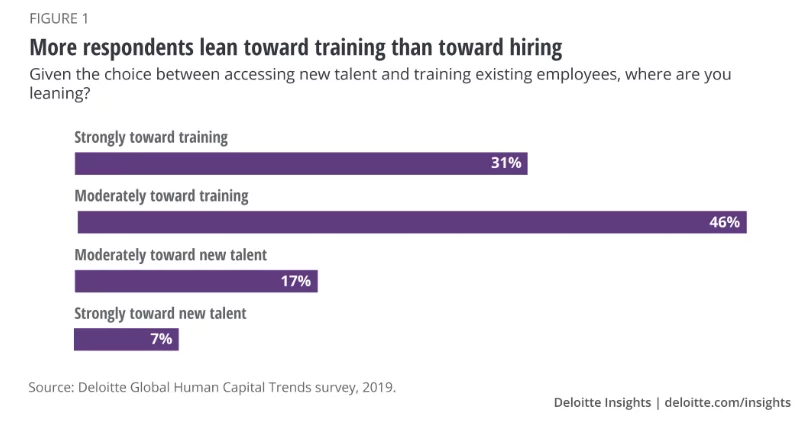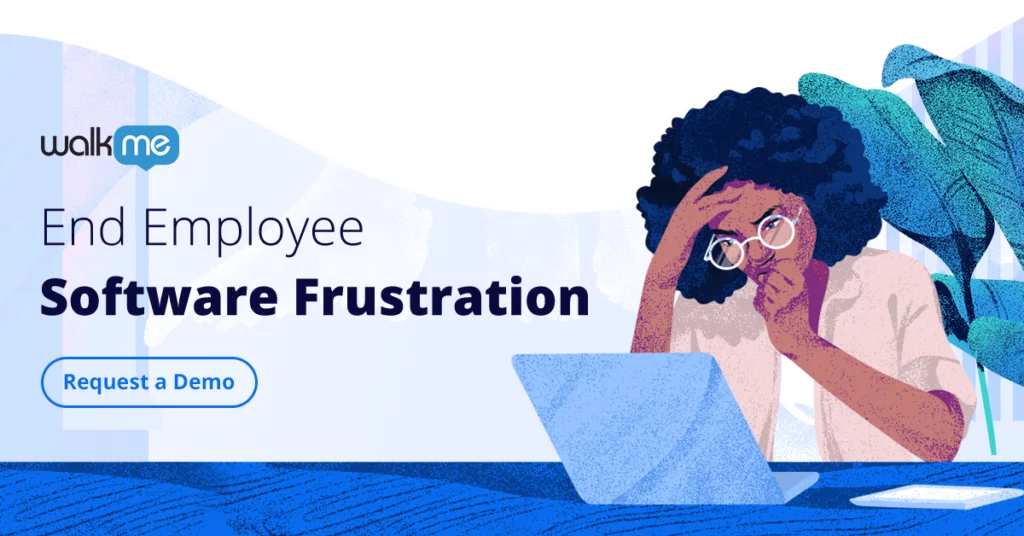“In a time of drastic change, it is the learners who inherit our future.”
American social philosopher Eric Hoffer said this of the 20th century, but the same idea rings true with the rapid technological pace of most 21st century organizations.
As businesses engage in digital transformation, building a learning culture is key to organizational success. Employee training goes beyond weeks or months of onboarding new employees; it extends to an unending focus on employee success.
Continuous employee development is the secret to yielding untapped potential in employee performance, benefiting both the organization and its employees.

The evolving marketplace of skills
With digital transformation on the rise, employees are increasingly required to upskill, reskill or cross-train others as new technologies replace older procedures and methods.
Building a comprehensive employee development plan ensures ongoing skill development within the company. This investment leads to increased employee satisfaction by providing stimulating growth opportunities.
Make change the new normal
Change management is a challenge for organizations, and can deeply affect workplace culture, and the traditional “way things are done.” Integrating employee development into the digital transformation process is an opportunity to create new learning opportunities for employees.
Setting up discussions with employees around career succession or future growth within the organization can help deter employee resistance and facilitate confident leadership during digital restructuring.
Look into your company’s crystal ball
Providing learning opportunities for your employees is a gift to the future of your organization. Teaching applicable skills beyond an employee’s existing job description can mobilize career growth. Employee development establishes quantifiable and achievable goals, increasing employees’ sense of fulfillment, and thus retention of the company.

The challenges of designing employee learning plans
In 2019, results from Deloitte’s Global Human Capital Trends survey listed learning and development as the top-ranked challenge for managers. Managers are increasingly aware of the importance of creating an ongoing learning journey. But they admit to difficulties in determining which areas of learning to focus on and how to implement such programs in the workplace.
Succeeding as partners in employee development
Traditionally, employee development is driven in two ways:
Top-down entails managerial training for new systems or products that are introduced into the organization.
Bottom-up calls for employees to approach managers with suggestions for enrichment courses or further training to better perform their jobs.
In today’s organizations, a combination of both—two-way partnerships between employees and management—is essential for ensuring the success of a corporate learning culture.
More managers are recognizing the importance of a continuous learning journey. LinkedIn’s 2020 Workplace Learning Report found that 83% of learning & development professionals say their executives support employee learning. But only 27% say their CEOs are active champions of learning. Partnerships across all aspects of the organization, from the C-suite to entry-level employees, are integral for championing the focus of an organization’s learning culture.

Employee development planning process
To create a learning culture that supports employee development, effective steps by HR and managers include:
- A digital adoption platform to customize training modules for employee development
- Employee training plans between managers and employees that highlight potential skills and development areas based on current and projected company endeavors
- Employee-initiated internal training sessions and cross-training to share expertise with other teammates
- Weekly one-on-ones between managers and employees to monitor ongoing learning plans, set up additional training, or advocate for building out new training software modules
How to select areas for employee development and training
- Interview expert employees. Encourage employees to create training modules for their vertical or horizontal teammates. For example, interview the marketing department about what they wish the sales department knew of their day-to-day; or ask the product team what they’d like to teach to marketing.
- Use insights. Leverage a digital adoption platform to gain real-time software use, identify training gaps and commonly made errors in the existing systems. Design and execute the appropriate training to remedy those oversights.
- Focus on soft skills. Soft, or interpersonal/communication skills, can be transferred across departments, no matter the rate of technological change. As more core aspects are automated and digitized, soft skills are increasingly relevant as the glue that binds both within and among tech-oriented departments.
- Survey employee interests. Find out what fascinates your employees, and provide them with the support to learn more. There’s nobody closer to the ground and in touch with the latest trends than they are. But chances are there aren’t enough hours in a day to constantly stay on top of all emerging tools. Ask employees for suggestions to improve their work processes and satisfaction, and in turn, heighten value for clients and customers.
The ROI of employee development
Every sales and customer service department knows that it’s cheaper to retain an existing customer than to acquire a new one. Similarly, it behooves organizations of all sizes to invest far more of their cultural and managerial capital (not to mention actual dollars) in developing the skills of existing employees rather than new ones.

Building a learning culture of employee development improves employee retention rates by continually engaging employees in new challenges and opportunities for growth—and provides returns in everything from employee growth and longevity, to positive internal culture, to bottom-line revenues.


